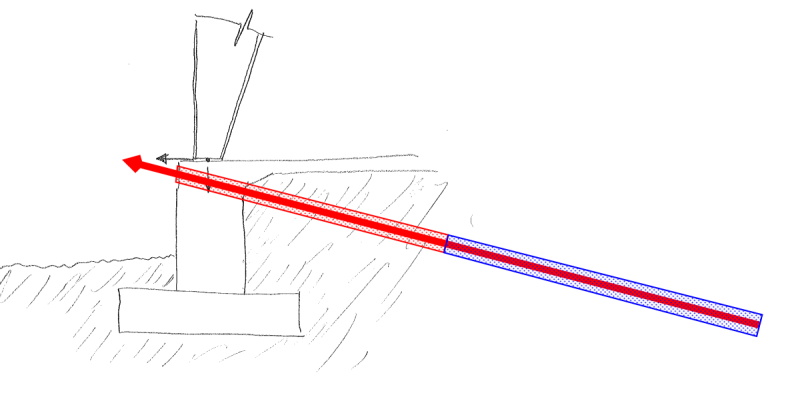I'm looking for some ideas on how to "repair" a new foundation for a metal building. The building is wide with a low eave height so the kickout forces exceed what can be resisted by hairpins so I designed tie-rods that run from footing to footing. The footings are spread footings with about a 5' high pedestal and the top of the slab is about 4' above the surrounding ground. The contractor "knew" the tie-rods were overkill so he put some rebar, that was 1/3 the area of the tie-rods that were shown on the drawings, in the thickened area of the slab and he tied the ends of the rebar to the anchor bolts with, you guessed it, tie wire. He did add #4 hairpins because they were being used at the endwall posts and he had some left over. Note: These are assumptions because he only poured half the slab so I was looking at the unpoured area. He thinks he's ready to make the second pour and that's the reason for my assumptions.
So, I consider his rebar to be completely ineffective and I'm looking for some options before I meet with the owner, who is aware there is a problem.
1) My first idea is to saw cut the 4" slab at the thickened area all the way to the edge of the slab and jack hammer or whatever it takes to remove the concrete and do the tie-rods right.
2) My second idea is to add a pipe column at approx. midspan beneath the metal building frame to reduce the kickout and see if maybe the #4 hairpins will work. The owner is going to have to make a lot of concessions for this to be a valid option.
3) Third idea is to pour some kind of stem wall outside of the building that would help the footing resist the overturning. There's a lot of details that would have to be worked out with this idea, like how to anchor the stemwall to the footing and column pier. Also, the horizontal load is being applied at the bottom of the column base plate so how can that force be spread out so that I'm not depending on the anchor bolts bearing against the concrete?
I'm looking for any other suggestions or things I need to consider for any of the options that I mentioned. Thanks for any help you can provide.
So, I consider his rebar to be completely ineffective and I'm looking for some options before I meet with the owner, who is aware there is a problem.
1) My first idea is to saw cut the 4" slab at the thickened area all the way to the edge of the slab and jack hammer or whatever it takes to remove the concrete and do the tie-rods right.
2) My second idea is to add a pipe column at approx. midspan beneath the metal building frame to reduce the kickout and see if maybe the #4 hairpins will work. The owner is going to have to make a lot of concessions for this to be a valid option.
3) Third idea is to pour some kind of stem wall outside of the building that would help the footing resist the overturning. There's a lot of details that would have to be worked out with this idea, like how to anchor the stemwall to the footing and column pier. Also, the horizontal load is being applied at the bottom of the column base plate so how can that force be spread out so that I'm not depending on the anchor bolts bearing against the concrete?
I'm looking for any other suggestions or things I need to consider for any of the options that I mentioned. Thanks for any help you can provide.

